
[ad_1]
The digital revolution has taken a giant stride, with cryptocurrencies reaching mainstream adoption. As an indicator of this change, a study shows that 130 countries, representing 98% of the global economy, are now actively exploring digital versions of their currencies, often called Central Bank Digital Currencies (CBDCs).
With the global financial system showing an ever-increasing shift towards CBDCs, a fascinating panorama of nations experimenting with digital money is unfolding.
The Global Financial System Turns Digital
Major economies such as the G20 nations, barring Argentina, have entered the advanced phases of CBDC development. The vanguard comprises eleven countries, including Caribbean nations and Nigeria, which have already launched their digital currencies.
The sheer scale of this endeavor is visible in China. Pilot testing of their CBDC covers 260 million people across 200 diverse scenarios ranging from e-commerce to government stimulus payments.
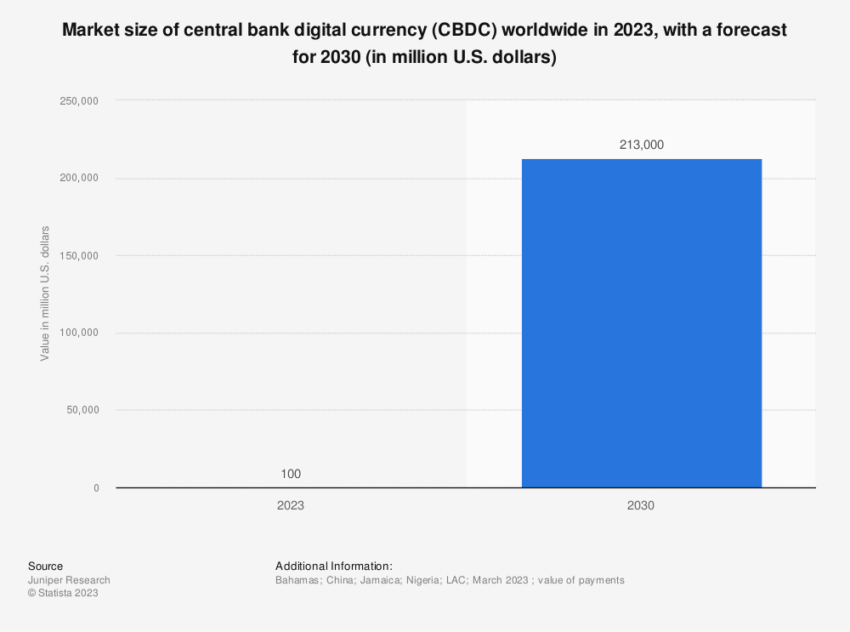
Two other prominent emerging economies, India and Brazil, also plan to launch their digital currencies next year. The European Central Bank has been equally proactive, setting the groundwork for its digital euro-pilot with a possible launch in 2028.
In 2023 alone, over 20 countries will make substantial strides toward their CBDC pilots.
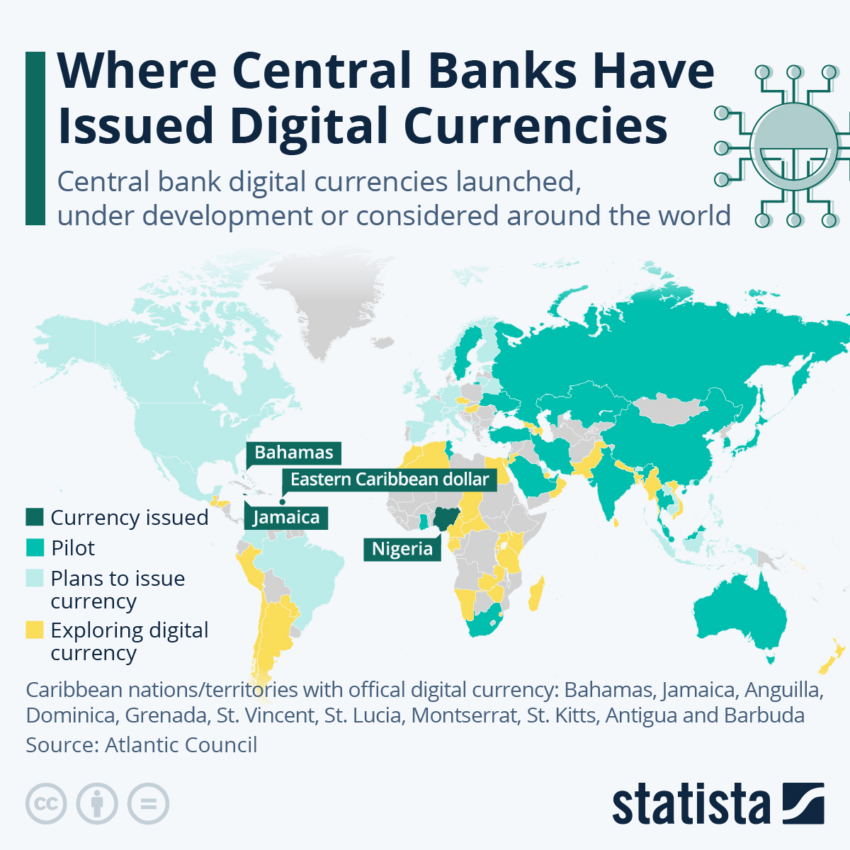
While the United States is progressing on a wholesale bank-to-bank digital dollar, the retail version for the broader population has hit a roadblock. Despite this, the potential global consequences of any US move towards CBDCs are enormous, given the dollar’s heavyweight status in the global financial system.
Drivers Behind the Digitalization of Money
Several factors drive the global push for CBDCs. These include the declining use of physical cash and authorities’ desire to protect their money-printing powers against Bitcoin and “Big Tech” firms.
Even political events like sanctions on countries such as Russia and Venezuela propel the trend. Therefore, prompting even long-time US allies to seek alternatives to existing payment networks.
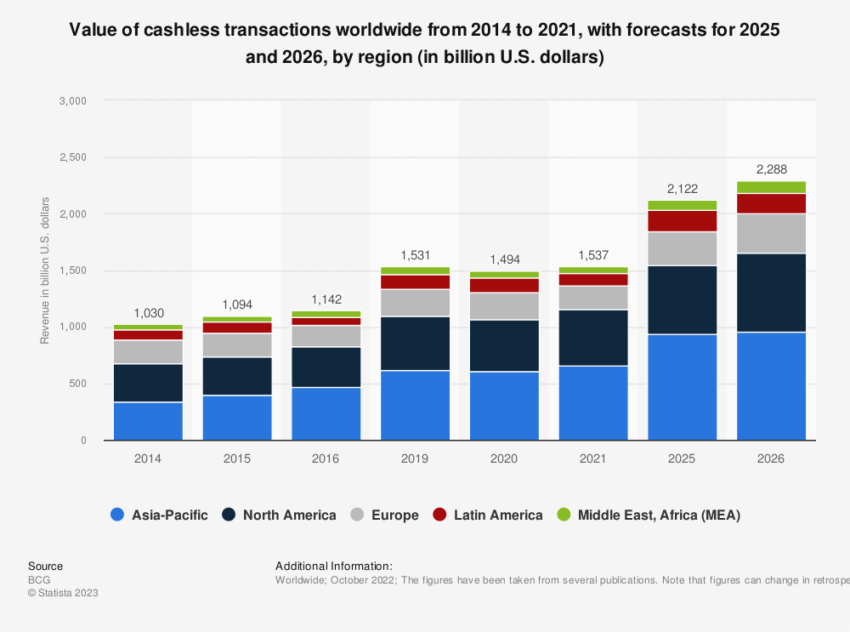
Sweden, a European pioneer in CBDCs, continues its progress. Meanwhile, the Bank of England is working on a potential digital pound. Down under, Australia, Thailand, South Korea, and Russia persist with pilot testing.
However, the journey is not without its bumps. Some countries like Nigeria have witnessed disappointing take-up rates post-launch, while others like Senegal and Ecuador have shelved their development work.
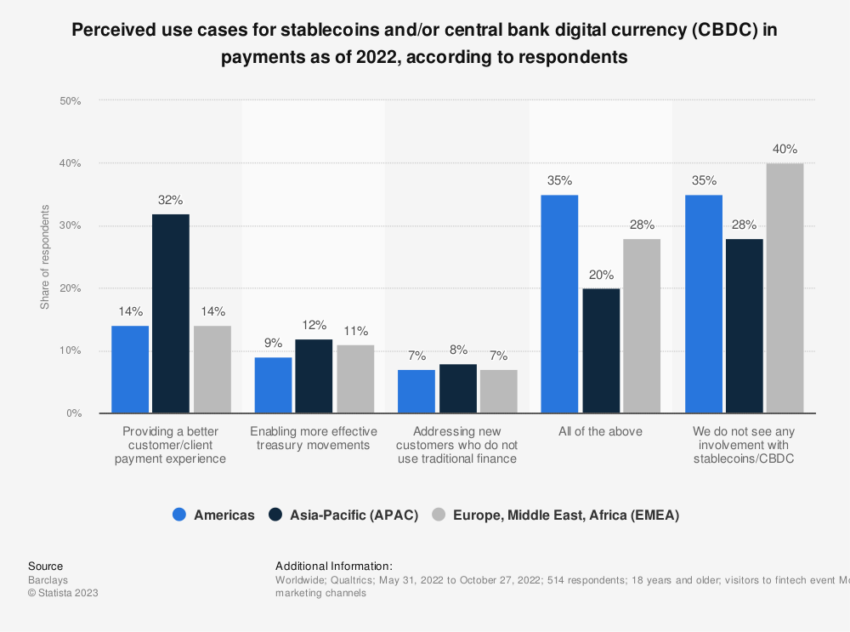
Currently, 64 countries are in an advanced exploration phase, while eleven have fully launched a digital currency.
CBDCs, the digital form of a country’s fiat currency, aim to promote financial inclusion, introduce competition in the domestic payments market, increase payment efficiency, and provide seamless execution of monetary and fiscal policies.
Full List of Countries Exploring CBDCs
The exploration of CBDCs is not just a technological evolution but also holds substantial economic and geopolitical implications. Here is the full list of countries exploring CBDCs:
Canada
United States
Mexico
Bermuda
The Bahamas
Belize
Guatemala
Honduras
Costa Rica
Jamaica
Haiti
Anguilla
Sint Maarten
Antigua and Barbuda
Saint Kitts and Nevis
Montserrat
Dominica
Saint Lucia
Saint Vincent and the Grenadines
Grenada
Curaçao
Venezuela
Trinidad and Tobago
Brazil
Colombia
Ecuador
Peru
Paraguay
Uruguay
Argentina
Chile
Iceland
Ireland
United Kingdom
Spain
France
Switzerland
Italy
Germany
Netherlands
Austria
Czech Republic
Hungary
Montenegro
Denmark
Norway
Sweden
Finland
Estonia
Lithuania
Belarus
Ukraine
Tunisia
Algeria
Morocco
Senegal
Egypt
Eritrea
Chad
Nigeria
Benin
Ghana
Central African Republic
Cameroon
Equatorial Guinea
Gabon
Uganda
Rwanda
Kenya
Tanzania
Madagascar
Zambia
Zimbabwe
Botswana
Namibia
South Africa
Eswatini
Madagascar
Mauritius
Oman
Saudi Arabia
United Arab Emirates
Qatar
Bahrain
Kuwait
Jordan
Palestine
Israel
Lebanon
Russia
Kazakhstan
Georgia
Azerbaijan
Iran
Pakistan
India
Sri Lanka
Nepal
Bangladesh
Bhutan
Myanmar
Laos
Thailand
Vietnam
Cambodia
Hong Kong
China
Malaysia
Singapore
Macau
Taiwan
South Korea
North Korea
Japan
Australia
New Zeland
Vanutau
Fiji
Solomon Island
Indonesia
Palau
Philippines
Tonga
The New Era: Central Bank Digital Currencies
The introduction of CBDCs does come with its challenges. These range from potential bank runs and operational risks such as cyber-attacks to the necessity for complex regulatory frameworks that uphold privacy, consumer protection, and anti-money laundering standards.
National security implications must also be considered, as new payment systems could impact a nation’s ability to track cross-border flows and enforce sanctions.
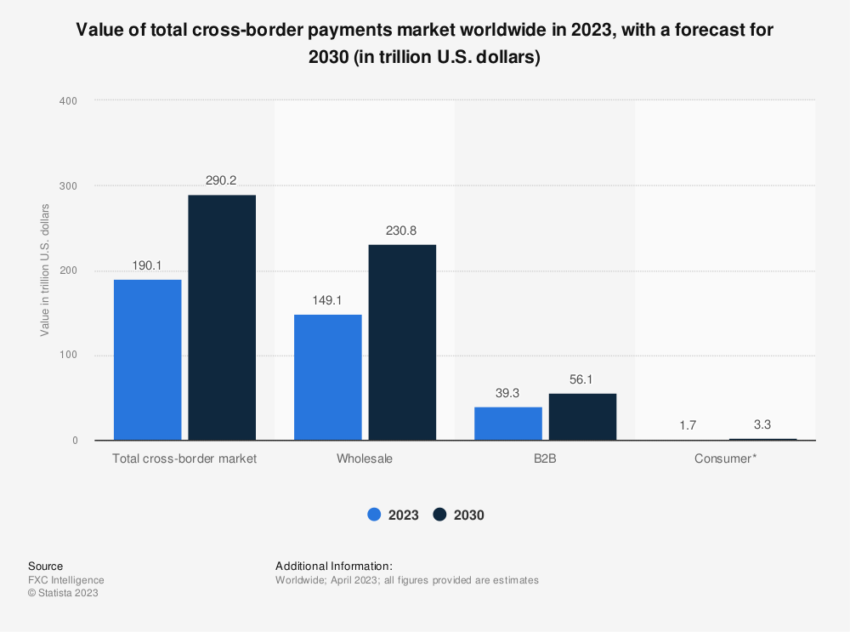
Despite these challenges, 2023 is a landmark year in CBDC exploration. With an expanding list of countries exploring CBDCs like Australia, Brazil, Japan, and Russia making significant progress, the future of digital currencies appears promising.
It seems certain that the digitalization of money is here to stay, signaling a paradigm shift in the world’s monetary system.
Disclaimer
Following the Trust Project guidelines, this feature article presents opinions and perspectives from industry experts or individuals. BeInCrypto is dedicated to transparent reporting, but the views expressed in this article do not necessarily reflect those of BeInCrypto or its staff. Readers should verify information independently and consult with a professional before making decisions based on this content.
[ad_2]
Source link




